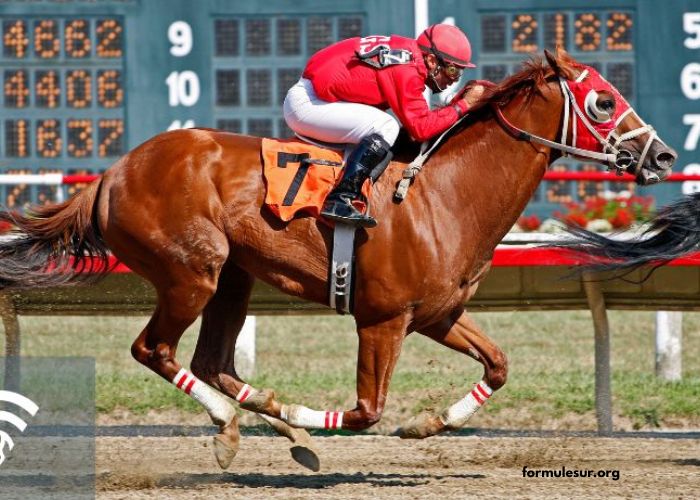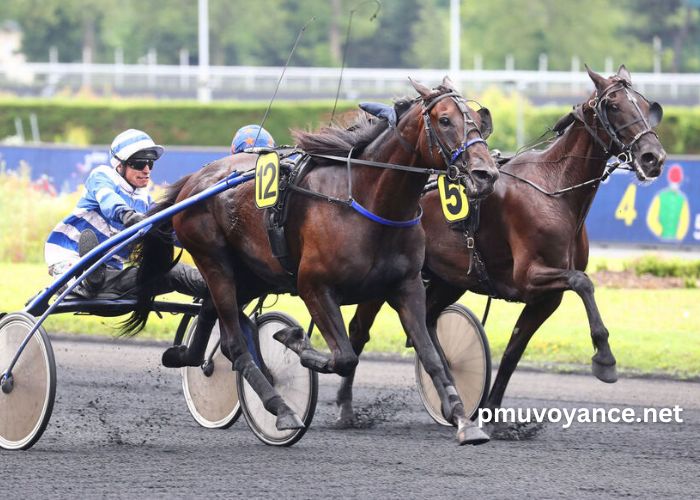In the world of horse racing, understanding the various metrics that influence a horse’s performance is essential for bettors and enthusiasts alike. One of the most significant metrics used in assessing a horse’s form is the indice de forme. This term, which translates to “form index,” is a critical component in evaluating how a horse has performed in recent races and predicting its potential success in upcoming events.
The indice de forme takes into account various factors, including a horse’s finishing positions, the quality of competition, and the conditions of the tracks on which it has raced. For bettors, utilizing the indice de forme effectively can be the difference between a well-informed wager and a haphazard bet. This blog post will delve into the concept of the indice de forme, how it is calculated, its importance in horse racing, and tips for using it to enhance your betting strategy.
What is the Indice de Forme?
The indice de forme is essentially a numerical representation of a horse’s recent performance. It provides a quantifiable way to assess how well a horse has been performing over a defined period, typically the last few races. A higher indice de forme indicates better performance, while a lower index suggests the opposite.
This metric incorporates not just the raw finishing positions but also considers the level of competition and the track conditions during those races. For instance, a horse finishing third in a high-stakes race against elite competitors may receive a higher indice de forme than a horse that finished first in a less competitive event.
The calculation of the indice de forme often varies between racing organizations and analysts, but it typically involves weighting the performances based on the finishing position and the context of each race.
Why is the Indice de Forme Important in Horse Racing?
Understanding the indice de forme is vital for both seasoned bettors and newcomers to horse racing. It serves as a foundational tool for evaluating horses, enabling bettors to make informed decisions when placing wagers. The indice de forme provides insights into a horse’s current capabilities and potential to perform in future races.
For example, if a horse has consistently ranked highly in its recent outings, its indice de forme would reflect that, suggesting it is in good condition and likely to perform well in upcoming races. Conversely, a horse with a declining indice de forme might indicate that it has been struggling, making it a less appealing option for betting.
Additionally, the indice de forme allows bettors to compare horses more effectively. By analyzing the indices of multiple horses in the same race, bettors can identify which horses are in peak condition, enhancing their ability to select potential winners.
How is the Indice de Forme Calculated?
Calculating the indice de forme typically involves evaluating a horse’s last few races, often focusing on its most recent performances. Each finishing position is assigned a score, and these scores are aggregated to produce an overall index.
For instance, a horse that finishes first in its last race may receive a score of 10 points, while a second-place finish might score 8 points, and a third-place finish could score 6 points. These scores are then weighted based on the race’s difficulty. If a horse races in a high-stakes event against top competitors, that score may be adjusted upward to reflect the level of competition.
Furthermore, conditions such as track surface and weather can also play a role in the calculation. A horse that performs well in adverse conditions may receive a higher indice de forme than a horse that races under ideal circumstances.
Ultimately, the specific methodology for calculating the indice de forme may vary between racing analysts and organizations, but the general principles of evaluating recent performances and adjusting for competition and conditions remain consistent.
How Can Bettors Utilize the Indice de Forme?
For bettors, understanding how to utilize the indice de forme effectively can lead to more informed betting decisions. First and foremost, it’s crucial to regularly check the indice de forme of horses competing in upcoming races. This data is typically available on racing websites and can often be found in race programs.
When analyzing the indice de forme, bettors should look for trends. A horse with a consistently high index may be on a winning streak or be in peak form, suggesting it could be a good candidate for a win bet. Conversely, a horse with a declining index could signal poor performance and may not be worth the investment.
Additionally, it’s essential to compare the indice de forme of multiple horses in the same race. This comparative analysis can help bettors identify which horses are likely to perform best. For example, if two horses have similar indices but one has a recent history of competing in tougher races, that horse may have a competitive advantage.
Bettors should also consider integrating the indice de forme with other factors, such as jockey performance and track conditions. This holistic approach will yield a more comprehensive view of a horse’s chances, increasing the likelihood of successful betting outcomes.
What Other Factors Influence a Horse’s Performance?
While the indice de forme is a crucial metric in horse racing, it is not the only factor that influences a horse’s performance. Other elements can significantly impact how well a horse runs, including:
- Jockey Experience: The skill and experience of the jockey can play a pivotal role in a horse’s performance. A seasoned jockey may better navigate challenging situations during a race.
- Track Conditions: Different horses may excel in various track conditions, whether wet or dry, hard or soft. Understanding how a horse has performed under similar conditions can provide valuable insights.
- Distance of the Race: Horses may have preferences for specific distances. A horse with a strong record in shorter races may struggle in longer ones, regardless of its indice de forme.
- Training Regimen: A horse’s training routine, including any recent changes, can impact its performance. Horses that have undergone intensive training may perform better than those with inconsistent training.
- Health and Well-being: A horse’s physical condition, including any injuries or ailments, is critical. Even a horse with a high indice de forme may underperform if it is not in peak health.
Understanding these factors in conjunction with the indice de forme can provide bettors with a more comprehensive analysis and better-informed decisions.
How is the Indice de Forme Used in Betting Strategies?
Integrating the indice de forme into your betting strategy involves more than just placing wagers on horses with high indices. Instead, it requires a nuanced approach that considers multiple variables to improve your betting outcomes.
One effective strategy is to use the indice de forme to identify value bets. A horse with a high indice de forme may be underrated in the odds offered by bookmakers. By identifying such horses, bettors can capitalize on potentially profitable opportunities.
Additionally, combining the indice de forme with situational betting can enhance strategy. For example, if a horse with a high indice de forme is racing on a familiar track where it has previously performed well, this scenario could warrant a more substantial wager.
Moreover, bettors should monitor changes in the indice de forme as race day approaches. If a horse’s index improves dramatically due to a recent winning streak, it might be an opportune time to place a bet before the odds adjust. Conversely, if a horse’s index declines significantly, it may be wise to avoid betting on that horse.
Ultimately, the indice de forme can be a powerful tool in formulating effective betting strategies, but it should be used in conjunction with a comprehensive analysis of other relevant factors.
Conclusion
In conclusion, the indice de forme is a vital component of horse racing that provides essential insights into a horse’s recent performance and potential for future success. For bettors, understanding and utilizing the indice de forme can significantly enhance their betting strategies and overall experience in horse racing.
By incorporating the indice de forme into your analysis, you can make more informed decisions, identify potential winners, and increase your chances of a successful wagering experience. Remember that while the indice de forme is an invaluable metric, it is most effective when combined with an understanding of other influencing factors, such as jockey experience, track conditions, and overall health of the horse.
As you continue your journey in horse racing, keep the indice de forme at the forefront of your analysis. By doing so, you’ll be better equipped to navigate the complexities of this exhilarating sport and maximize your potential for success.



